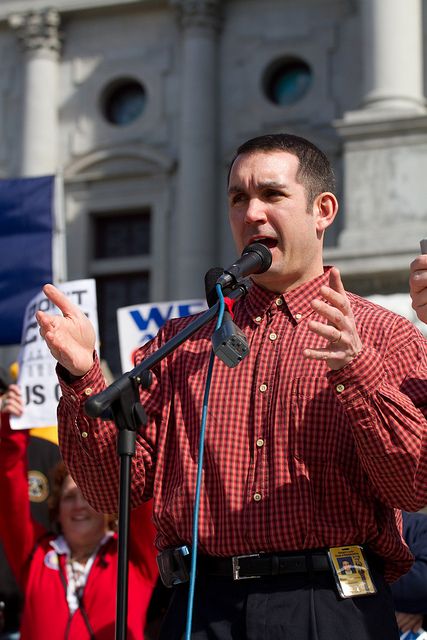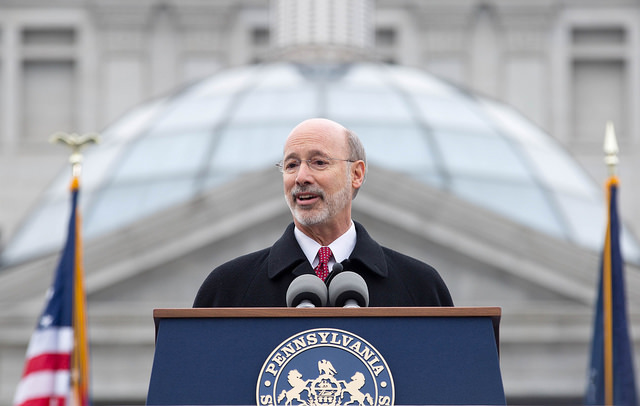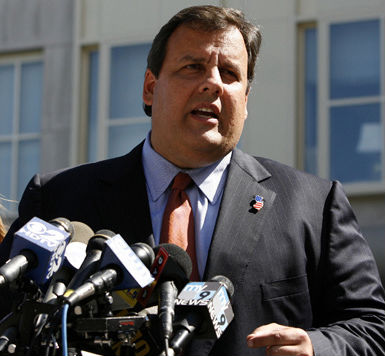
Leo Kolivakis is a blogger, trader and independent senior pension and investment analyst. This post was originally published at Pension Pulse.
Alexandra Stevenson of the New York Times reports, Calpers’s Disclosure on Fees Brings Surprise, and Scrutiny:
Earlier this year, a senior executive of the California Public Employees’ Retirement System, the country’s biggest state pension fund, made a surprising statement: The fund did not know what it was paying some of its Wall Street managers.
Wylie A. Tollette, the chief operating investment officer, told an investment committee in April that the fees Calpers paid to private equity firms were “not explicitly disclosed or accounted for. We can’t track it today.”
It was an unusual disclosure. In the world of public pension funds, Calpers is a big fish. It manages $300 billion in retirement funds for 1.6 million teachers, firefighters, police officers and other state employees and is generally credited with being the most sophisticated investor in the pension world.
For J. J. Jelincic, a member of the Calpers board, the disclosure raised a red flag. “I am disturbed that we don’t disclose the carry,” Mr. Jelincic said, referring to carried interest, the industry term for private equity performance fees. “I am appalled and, actually, I’m not sure I believe the staff when they say they don’t know what the carry is,” he added.
It also caught the attention of Edward A. H. Siedle, a pension fraud investigator and a former lawyer at the Securities and Exchange Commission. Mr. Siedle, who has investigated public funds like those in North Carolina, Alabama and Rhode Island, and corporate retirement plans for Walmart, Caterpillar and Boeing, is seeking to investigate Calpers with the help of crowdfunding. He wants to determine, among other things, how much Calpers pays in private equity fees. He plans to pay for his project by raising $750,000 from the public through the online platform Kickstarter.
“The money manager knows to a penny what the fees are,” Mr. Siedle said. “The only explanation is that the pension fund has chosen not to ask the question because, from an accounting and legal perspective, those numbers have to be readily available. They are intentionally not asking because if the fees were publicly disclosed, the public would scream.”
Calpers paid $1.6 billion in fees to Wall Street in 2014, according to its annual report. The figure, however, does not include how much it paid in carried interest. Both Mr. Siedle and Mr. Jelincic say that figure could be as much as an additional $1 billion a year.
Private equity firms typically charge investors a management fee of 1 to 2 percent of assets and about 20 percent of any gains each year. But fees for transactions, costs for monitoring investments and legal fees are not readily disclosed. Those undisclosed fees result in a substantial weight on returns, according to a recent study by CEM Benchmarking.
Faced with ballooning deficits and lackluster performance, state pension funds nationwide are beginning to examine more closely how much they are paying Wall Street to manage their investments. Calpers for the first time this year will begin to make more payments to retirees than it receives from contributions and its investments. Pennsylvania is facing a $50 billion shortfall in its pension fund.
In New York City, the comptroller, Scott M. Stringer, commissioned a study of the city’s five pension funds that showed external managers fell more $2.5 billion short of benchmark returns over 10 years.
Mr. Siedle’s firm, Benchmark Financial Services, recently published a crowdfunded investigation into Rhode Island’s public employee pension fund. In an 81-page report, Mr. Siedle outlined how the pension fund had incurred $2 billion in preventable losses from investments in outside real estate, private equity and hedge funds. Seth Magaziner, Rhode Island’s treasurer, has disputed the report.
“Treasurer Magaziner strongly agrees with the need for greater transparency and lower fees by alternative investment managers doing business with public pension funds,” Shana Autiello, a spokeswoman for Mr. Magaziner, said.
In addition to wanting to examine the fees that Calpers pays, Mr. Siedle also wants to scrutinize the relationship its executives and placement agents — middlemen it hires to help it find money managers — have with Wall Street to determine whether any conflicts of interest exist. He plans to spend nine months sifting through Calpers’s public disclosures and will also comb through the private offering documents that external money managers give to consultants who advise Calpers.
Calpers said it was trying to address the lack of transparency around fees. In April, Mr. Tollette, the chief operating investment officer, told the investment committee that Calpers planned to require greater disclosure from the private equity firms it invests in, adding that this was an industrywide problem. Calpers is also working on a reporting program that would track data from each external firm with which it has investments.
“Calpers has long been a leader in advocating for fee economies and transparency, including in private equity,” Joe DeAnda, a spokesman for Calpers, said. “A necessary element in that effort is additional disclosure and reporting from the general partners managing the funds,” he added.
The public scrutiny comes as Calpers seeks to simplify what it has called a complex and expensive portfolio. This month, Ted Eliopoulos, the chief investment officer, said that over the next five years, Calpers would cut by more than half the 212 external money managers it invests with for private equity, real estate and global equity funds. It will reduce the number of private equity firms to 30 from 98, giving those firms $30 billion to manage. Calpers has put its money with some of the biggest private equity firms in the world, including TPG, Blackstone, Carlyle and Kohlberg Kravis Roberts.
Last year, as part of its move to slim down its external investments, Calpers decided to liquidate $4 billion of hedge fund investments.
The S.E.C. has started to look more closely at private equity firms to understand how they value their assets and charge fees. The agency, which has conducted examinations of private equity firms, found that more than 50 percent of the time there were violations of law or weaknesses in a firm’s controls.
Mr. DeAnda, the Calpers spokesman, said fund officials had been “actively engaging with some of our private equity partners to help improve the disclosure and data available and have been closely monitoring the regulatory announcements and attention around this subject.”
Mr. Siedle’s investigation will not be the first for Calpers. In 2009, it hired the law firm Steptoe & Johnson to look at its use of placement agents as part of a wider pay-to-play scandal across the industry. The investigation, which cost Calpers $11 million, uncovered evidence of bribery and corruption. The S.E.C. accused Federico R. Buenrostro Jr., the Calpers chief executive from 2002 and 2008, and Alfred J. R. Villalobos, a former board member turned placement agent, with fraud. The United States attorney in San Francisco charged the two men with criminal fraud. Mr. Buenrostro pleaded guilty last year to conspiracy to commit bribery and fraud. Mr. Villalobos, who pleaded not guilty, committed suicide this year.
Seeking to put the controversy behind it, Calpers adopted new policies and disclosure requirements. It continues to use placement firms.
This article covers a lot of hot topics. First, let me disclose that I sent an email yesterday to Ted Eliopoulos, CalPERS’ CIO, and Réal Desrochers, the head of CalPERS’ private equity, to see their response to the article. My email went unanswered, which is odd since Réal knows me well.
Anyways, let me share with you my thoughts. It’s utterly unacceptable for any limited partner (pension fund, sovereign wealth fund, insurance company, endowment, etc) not to know the fees it’s doling out to private equity funds. In the case of CalPERS, the largest most followed public pension fund in the U.S., it’s worse as it should publicly disclose all fees being doled out to each of their GPs (private equity and other external funds).
I simply don’t buy the excuses being doled out by CalPERS’ senior staff and agree with J. J. Jelincic, one of their members cited in the article, there’s no way that CalPERS’ private equity staff don’t know what the carry is on each of their fund investments. I know Réal Desrochers well enough to know that he holds that information on his fingertips and can easily disclose it to any board member.
So why isn’t he doing so? I don’t know but if I was a CalPERS’ board member, I would demand the information or simply fire him for failing to disclose these fees and violating his fiduciary duties. It’s simply unacceptable for any public pension fund, especially CalPERS which prides itself on good governance, not to disclose all these fees as well as hidden fees and all relationships with third party placement agents.
On the topic of placement agents, the scandal that rocked CalPERS over two years ago should have been a wake-up call to ban them altogether. Instead, this arcane practice fraught with conflicts of interests continues at CalPERS and elsewhere where millions are squandered on middlemen.
The fact that Mr. Villabos committed suicide is tragic and shows you how ugly things get when big money meets big pensions. The potential for fraud and bribes is huge and I simply don’t trust placement agents or underpaid pension fund managers enough to take their word that everything is kosher. I’ve seen enough shady things from “CFAs” and even well-paid pension fund managers on the take to know that bribing pension fund managers although rare, can and does happen.
Ted Siedle, the pension proctologist, should shine a light on all these fees and third party relationships. When it comes to public pensions, my philosophy is simple, I want to know every detail in terms of performance and money and fees being doled out to all external managers and third party providers like placement agents, lawyers, accountants, software vendors, consultants, and brokers.
People think fraud and bribes at pension funds can only happen with external managers but that is nonsense. I’ve seen pension fund managers schmoozing with brokers, consultants and third party vendors, pushing commissions to their favorite brokers while ignoring others who don’t wine and dine them, sending a contract to their consultant buddies or buying expensive and useless risk, back and front software systems without a proper request for proposal (RFP) and proper bid process, scrutinized by internal and external auditors.
The same goes for law firms, accounting firms, actuarial firms and investment consultants. There needs to be a proper bidding process and the public should know which firms are selected every year and how much money is being doled out and on what basis.
What else? As I stated in my recent comment on private equity stealing from clients, limited partners should be made aware of any rebates private equity funds enjoy with third party providers and these rebates should be discounted from the fees they pay these funds.
Folks, we live in an era of deflation, pension poverty, underfunded pensions and increased regulatory scrutiny. The good old days of fast times in Pensionland are over. Board members and beneficiaries are increasingly asking for more transparency on fees and performance, and they’re holding pension fund managers accountable if they’re not meeting their fiduciary standards. And regulatory bodies are increasingly paying attention to public pensions too.
But let me not be overly critical of CalPERS staff in this post, after all Ted Eliopoulos and Réal Desrochers are not to blame for past investment mistakes that cost the giant fund billions and they’re moving to streamline investments and lower fees by chopping in half the number of external managers in illiquid alternatives and by nuking their hedge fund investments.
Finally, I highly recommend you read a RIABIZ article, CalPERS’s hatchet man, Ted Eliopoulos, goes on a manager firing spree, shaving hundreds of millions in management fees — but is it enough?.
This article provides a very decent overview of what Mr. Eliopoulos and his investment staff have managed to do in terms of cutting external manager relationships. It states that for its most recent fiscal year, the pension giant paid $1.6 billion in fees, with close to 90% of that money going to the real estate, private equity, and egregiously pricey hedge fund managers. But again that $1.6 billion in fees doesn’t include carried interest estimated at over $1 billion. A billion here, a billion there, pretty soon you’re talking about real money!
As far as their new investment approach to private equity, the article ends by stating this:
In its statement earlier this week, CalPERS said it expects to change its fundamental approach to private-equity investment. Going forward, CalPERS plans to invest via separately managed accounts with its external managers instead of investing in general funds. These external SMAs are often less expensive than traditional private-equity arrangements and offer more control and transparency for investors. Typically, however, they require larger sums of committed capital.
“I think this is all part of a much broader push for transparency, structure and as well pricing, in the investments space. The ‘black box’ hasn’t sold well since Madoff,” says Will Trout, a senior analyst with Houston-based Celent. See: Nine threats to the RIA business and how they can be avoided.
Such consolidation is good news for private-equity giants like The Blackstone Group LP, Carlyle Investment Management LLC, Apollo Global Management LLC and TPG, each of which already manages multiple billions for CalPERS and has capacity to take even more commitments.
In a sign of things to come, the Wall Street Journal recently reported CalPERS was handing another $500 million to Blackstone Group for a fund over which CalPERS will have some influence.
Yet CalPERS also made it clear that these Wall Street Goliaths won’t be the only winners of the consolidation push. Pensions & Investments reported last week that the fund is setting aside $7 billion to significantly increase allocations to managers in its development program who currently manage assets only in the tens of millions — an act that has the look of deconsolidation.
That $7 billion is a pittance compared to what Blackstone (BX), Carlyle (CG), Apollo (APO), KKR (KKR) and TPG are going to get but at least they thought of setting some money aside for emerging managers and smaller funds. Every pension fund should be doing this through specialized funds of funds that can identify and track top emerging managers and smaller funds that fall under the radar.
As far as separately managed accounts with its external managers, unlike Canadian funds, CalPERS and many U.S. pension funds don’t have the investment staff to co-invest alongside their private equity managers, so this approach allows them to provide a big chunk of money to fewer relationships, squeezing them hard on fees.
Still, don’t kid yourselves, private equity is only trying to emulate Warren Buffett because it sees the writing on the wall and wants to increase the size of assets under management so it can keep collecting management fees and carried interest on a larger asset base.
Photo by rocor via Flickr CC License





